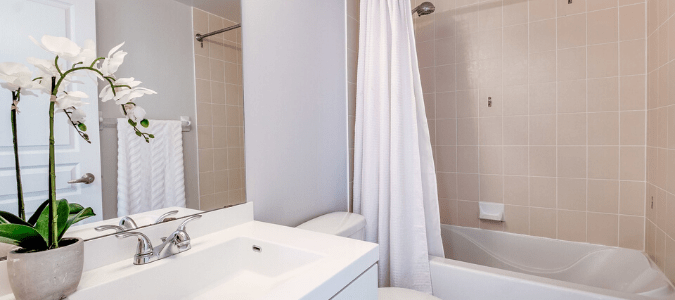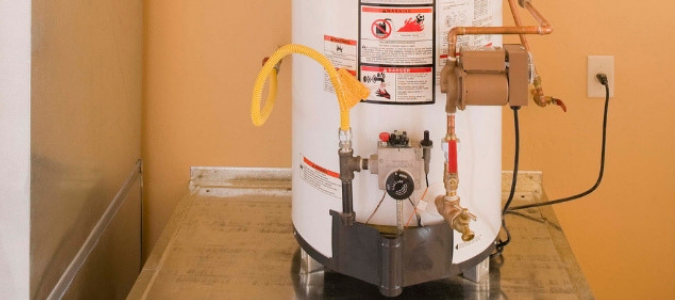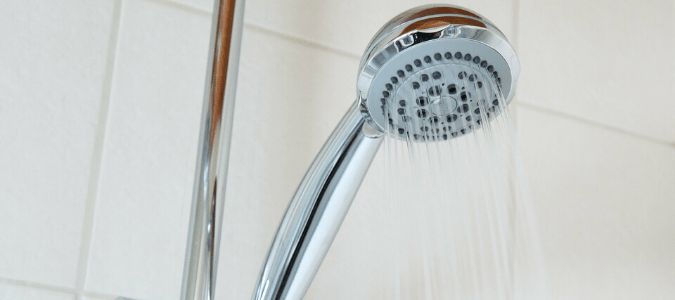
When you turn on a faucet in your home, you expect water to come rushing out. When you turn it to hot, you expect the water to heat up—if not immediately, then within a reasonable period of time. That’s why, when there’s no hot water in your house, it’s not just annoying; it’s actually alarming. It can even be considered an urgent problem, especially if you’re turning on your shower to get ready for work. If there’s no hot water in your house, there are several different possibilities for why the water isn’t warming up. Let’s take a look at the various reasons why this can happen and what to do when it does.
The kitchen sink and the shower or tub are the two spots in a home where people most commonly use hot water for hand-washing dishes and for bathing. Many people also use hot water for washing their hands, as well as for washing dishes or clothes in the dishwasher or washing machine. Thus, when you turn on one tap in your home and find there’s no hot water, it’s a good idea to check the other fixtures in the house to see whether hot water is available anywhere else.
If the problem is affecting only one faucet or fixture, the issue is likely with that fixture or its supply lines. Faucets are equipped with internal cartridges that regulate both water flow and temperature; if you turn on the hot water but the water won’t heat up, it may be that the cartridge has failed and needs to be replaced. Water that fails to get hot could also be caused by a clogged filter within the system that is preventing hot water from coming through. Another possibility is that the line bringing hot water from the pipes to the fixture has gone bad, in which case you’ll need to get your supply line fixed.
A handy homeowner with plumbing know-how may try to take on any of these repairs without professional help. In some cases, you’ll just need to turn off the water supply, unscrew or otherwise remove the faulty part and install a new replacement part.
Tackling plumbing jobs at home can get tricky fast, however, if unexpected problems crop up while you’re attempting to fix the original issue. Sometimes homeowners find that the supply line connections to the faucet are stripped or rusted in one position. In other cases, they start swapping out parts, only to find that the problem mysteriously isn’t fixed. Hiring a licensed plumber can save plenty of time, effort and frustration, since plumbing specialists can utilize their expertise to determine the exact source of the problem and the appropriate fix.
If none of the fixtures in your home have hot water, that indicates an issue with the water heater rather than with any single faucet or fixture. There are several simple issues that can cause there to be no hot water in the whole house, starting with a tripped breaker. Tripped breakers can be reset at the home’s circuit breaker box, but if the breaker is tripped repeatedly, it’s time to call in a professional who can figure out what’s happening, why and how to fix it.
Another potentially simple issue is a flipped ECO switch. Electric water heaters are equipped with emergency cut-off switches, or ECO switches, which are located at the top of the unit. When this switch is flipped, the water heater won’t generate hot water until it’s flipped back again. This is another issue that happens from time to time, but if it happens repeatedly, a plumbing specialist may need to assess the situation.
Another possibility that is often simple for homeowners with gas water heaters to address is a blown-out pilot light. It is relatively simple for a homeowner to relight the pilot light on their own, but if it repeatedly goes out, it could be happening due to poor ventilation, an obstruction in the exhaust flue or not enough gas reaching the unit. In any of these cases, it’s time to get in touch with a plumbing specialist to determine what’s going on. The controls on gas water heaters also sometimes fail, which would also merit contacting a plumbing professional to fix.
For homes equipped with tankless water heaters, when there is no hot water available in the home, the first thing to check is whether the breaker has tripped, the unit is plugged in and the power is on. If none of these is the problem, the next things to check are whether the controller is turned on or in standby mode, and the gas valve is fully open. If the valve is open and the other gas appliances in the home are working properly, that would indicate a problem with the water heater itself. Tankless heaters typically display error codes that can help a plumbing professional diagnose the exact issue that is preventing it from generating hot water. Then, any necessary plumbing repairs can be performed.
If your home has a traditional tank water heater and you’re not getting hot water at any of the fixtures, it could be a symptom of sediment buildup inside the hot water heater. Sediment buildup happens over time, and if it isn’t flushed on a periodic basis, it can greatly reduce the water heater’s capacity to generate and hold the proper volume of hot water. If you run your dishwasher or clothes washing machine—each of which might use some amount of hot water—and then try to take a hot shower, there might not be any hot water available simply because the water heater hasn’t had time to regenerate a fresh supply. In this case, the water heater may need to be serviced and flushed. If it’s an older unit or too small to serve the size of your home, you may want to consider a replacement.
For homeowners who aren’t familiar with how water heaters work, it’s a typically smart idea to contact a licensed plumbing specialist to diagnose and fix the water heater problem, in order to save yourself time and frustration.
Previously, we mentioned that you may not have hot water because your pilot light isn’t lit. If you keep trying to light your pilot light and it just won’t stay lit, you probably want to learn more about this issue and how to resolve it. Keep reading to learn more about this problem, as well as what is going wrong if your water heater is only making your water lukewarm.

Reasons Your Water Heater Pilot Light Won’t Stay Lit
It’s normal for a gas water heater’s pilot light to go out from time to time, and it’s relatively simple to relight it, especially for experienced homeowners. However, when your water heater pilot light won’t stay lit and goes out repeatedly, it indicates a larger problem that should be addressed by an experienced plumbing professional. There are a few common reasons that a water heater’s pilot light might go out repeatedly.
Poor Ventilation
In some cases, airflow might be restricted in the closet or attic space where the water heater is located. When the water heater is enclosed and there isn’t enough air, it can snuff out the pilot light, just the way you can snuff out a jar candle by putting a lid on it. If this is the problem, the ventilation will need to be improved, or else the water heater might have to be relocated.
Obstructed Exhaust Flue
If the water heater isn’t able to vent exhaust properly, it’s usually due to some type of obstruction blocking off the exhaust flue. Blockages can occur due to rodent activity or even storms. These conditions can cause the pilot light to go out. If you are in this situation, this will likely happen repeatedly until the obstruction is removed so the unit can vent properly.
Lack of Gas Flowing to Appliance
Sometimes, your pilot light won’t stay lit because not enough gas is making it to the water heater. If something is restricting the gas flow to the water heater, the pilot light won’t stay lit. This is a problem for a plumbing specialist to address, since the gas lines will need to be inspected in order to determine what is preventing the gas from reaching the unit. It could be that you have a pinhole leak or a kinked or damaged line.
Another common plumbing problem that homeowners have with their water heater is that it isn’t heating their water to their desired temperature.

What to Do If Your Hot Water Heater Is Only Lukewarm
When you turn on the hot water to do dishes or take a shower and leave it running, you expect genuinely hot water to gradually come out of the tap. But when there’s a problem with your hot water heater, only lukewarm water might flow from your faucet. When water from the water heater is not hot enough, it could indicate you are experiencing one of several different issues. Handy homeowners can check the following, or you can contact a licensed plumbing professional to diagnose the problem and determine the right fix:
- Is the temperature (or thermostat, on a tankless heater) set at the proper level? You can try turning up the temperature on your water heater if it seems low, and wait to see if that addresses the issue. When turning up the temperature, keep in mind that the highest you should set your water heater temperature is to 120 degrees. Anything higher than that could be a safety hazard. If your water heater is located in the attic of your home, it’s also possible that it’s actually too hot, which can cause the thermostat to shut off ventilation.
- Is there sediment buildup? Both traditional and tankless water heaters can suffer from an internal buildup of sediment that impedes the unit’s ability to properly heat water. Tankless units can experience scaling that builds up on the heating elements over time, sometimes even causing the system to overheat and fail. In conventional units, some signs of sediment buildup are your water heater making a popping noise, or potentially a knocking or pinging sound, along with the reduction in the unit’s efficiency and heating capacity. You could also have a buildup of sediment in your water heater if you’re running out of hot water faster than usual.
- Is there an issue with your tankless unit’s server or computer? If so, this is a specialized problem that will need to be addressed by a licensed plumbing specialist who has experience with repairing tankless units.
Sometimes, your water isn’t hot enough for reasons unrelated to the water heater. If one of the fixtures in your home has a bad cartridge, as we mentioned earlier, it can cause cold water to cross over into the hot system, diluting the heat. The issue could also be a check valve that has failed, allowing cold and hot water to mix and flow in both directions. A plumbing professional will be able to determine if these issues are contributing to your issues and replace the failed parts, so your hot water will be restored once again.
ABC Can Get Your Water Your Desired Temperature
It can be extremely frustrating when your water isn’t getting hot, whether the water is lukewarm or cold. Instead of spending time trying to figure out your problem and risking damage to your water heater by making repairs yourself, contact the licensed specialists at ABC Home & Commercial Services. We have plumbers available 24/7 and we will be able to quickly diagnose and fix any problem you may be experiencing with your water heater. Also, we offer you peace of mind with a one-year plumbing warranty so you can feel confident that you’ll be covered if you begin to experience any issues after your repairs have been done.
